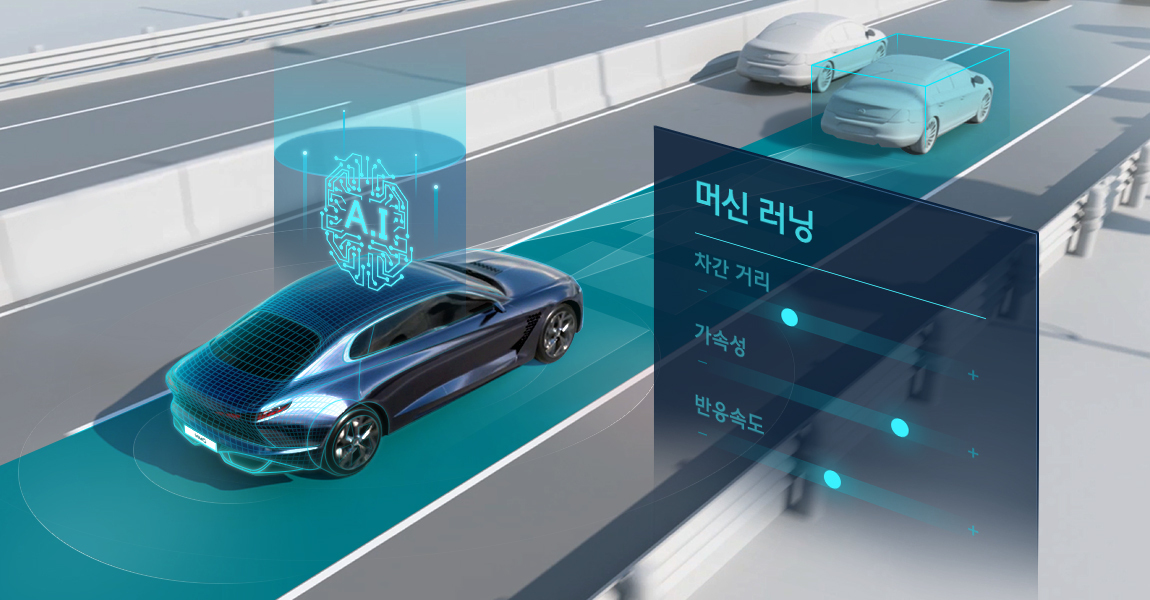Hyundai Motor Group said Monday that it has developed the world’s first self-driving technology using AI-based machine learning, which detects the driver’s driving pattern and apply it to the smart cruise control system.
In recent years, a host of carmakers have added advanced driver assistance systems to their models for safer and more convenient driving.
One of the core technologies is adaptive cruise control, a function which makes a car slow down and speed up automatically to keep pace with the car in front.
Until now, a driver was to set the maximum speed for cruise control and only had up to 4 different control options. To maintain the selected speed, a radar sensor watches for traffic ahead, locks the car in a lane and instructs the car to stay 2 to 3 seconds behind the car ahead of it, keeping their distance from those in front.
According to Hyundai Motor, its latest self-driving technology called SCC-ML -- Smart Cruise Control-Machine Learning -- works by consistently gathering driving data via front camera and radar sensors, so the machine learning algorithm can study the driver’s driving pattern, preference and habits.
 |
(Hyundai Motor Group) |
Hyundai Motor said such technology considers driving preference in largely three categories: distance with a car in front, acceleration and responsiveness to the driving environment, such as traffic conditions and obstacles on the road.
SCC-ML can differentiate some 10,000 different driving patterns on the road, so anyone can experience customized smart cruise control driving and does not feel a sense of difference even when driving on cruise control mode, the company explained.
“SCC-ML applied AI-based machine learning algorithm to significantly improve the usability of smart cruise control system,” said a Hyundai Motor official, adding that it was “meaningful” for them to have secured the AI-based self-driving technology for the first time in the industry.
As cruise control is a crucial part of the self-driving cars, Hyundai Motor said it will gradually apply SCC-ML to its new cars.
The carmaker claimed that SCC-ML can be considered “level 2.5” self-driving technology, as it includes lane change assist and highway driving assist, which provides autonomous steering, acceleration, deceleration and distance keeping mode while cruising on a highway.
Currently, most cruise control technology offers level 2 autonomous driving.
According to US Department of Transportation’s National Highway Traffic Safety Administration (NHTSA), autonomous driving can be measured on a scale of 0-5: At level 0, all major systems are controlled by humans; at level 1, certain systems such as cruise control or automatic breaking can be controlled by the car.
Level 2 involves at least two simultaneous and automated functions such as acceleration and steering, but human control is required to ensure safety. At level 3, the car is able to self-manage safety functions, but the driver is expected to take over when alerted. At level 4, the car is fully autonomous in most driving scenarios. The final level 5 refers to when the car is completely autonomous.
By Kim Da-sol (
ddd@heraldcorp.com)








